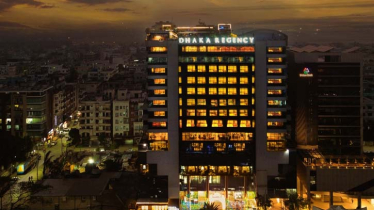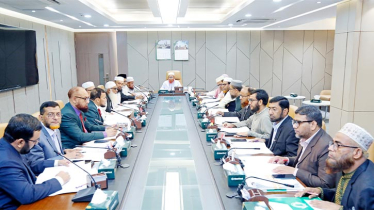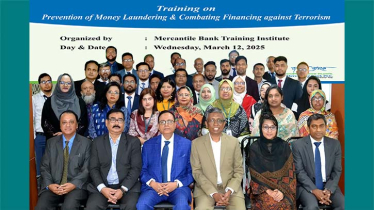
Photo : Collected
The number of Bangladeshi Bureau of Manpower Employment and Training (BMET) cardholders working abroad stands at 12,524,298.
However, there is no accurate data on how many workers are working illegally. It is estimated that around 500,000 workers are in countries like Italy, Malaysia, the United States, and the UK without proper documentation.
Among the legal workers, the highest number is in Saudi Arabia, with 3,885,375 workers, followed by the UAE with 2,157,832 workers.
Despite this large number of Bangladeshis employed abroad, the remittance figures have repeatedly been disappointing. In 2023, the highest remittance recorded was $21,942.76 million.
Experts suggest that if all the workers sent remittances through legal channels, the total amount could reach $50 billion.
However, the current figure is less than half of that. The government needs to work more at an institutional level to increase remittance inflows.
According to sources, the rate at which people are going abroad for work legally does not match the remittance inflows.
Over the past three years, the number of workers sent abroad has increased by 73% to 84%, but remittance inflows have remained stagnant.
Data from the Bureau of Manpower Employment and Training (BMET) shows that in 2021, 617,209 workers went abroad legally, sending back $22,070.87 million through banking channels.
In 2022, 1,135,873 workers went abroad, sending $21,285.21 million. In 2023, 1,305,453 workers went abroad legally, sending $21,942.76 million. In the first four months of this year, 322,237 workers went abroad, sending back $8,317 million.
The BMET data also indicates that since 2021, the number of people going abroad has increased annually, but remittance inflows have remained the same.
Shah Abdul Tariq, additional director general of BMET, said that while workers are going abroad legally, many send their earnings through illegal channels. However, this practice has decreased somewhat, leading to an increase in remittances.
He said, “There has been a good flow of remittances in the past four months. Efforts are being made to encourage workers to send remittances through legal channels, including various promotional campaigns.”
Shariful Hasan, associate director of BRAC’s Migration and Youth Platform, believes that the mismatch between the increasing number of workers going abroad and the stagnant remittance inflows is due to the market-dependent dollar price in remittances and the inability to send skilled workers abroad.
He pointed out that Saudi Arabia is the largest destination for Bangladeshi workers, with nearly 1.7 million workers sent there in the past three years. Including those who went earlier, the total number of workers in Saudi Arabia exceeds 3 million.
Three years ago, Saudi Arabia remitted $5.7 billion, but with 1.7 million new workers, the current remittance is less than $4 billion.
Shariful Hasan emphasised that while the number of workers being sent abroad is increasing, many of them are unskilled.
Additionally, the difference in exchange rates between banking channels and informal markets (hundi) leads workers to send money through irregular means to get a better rate. Workers look for the quickest, most profitable, and least problematic way to send their earnings home.
Economists say increasing the dollar rate for remittances has helped curb illegal remittance channels to some extent.
According to Bangladesh Bank, several measures have been taken to boost remittance inflows through banking channels.
In addition to the previous 2.5% incentive, the dollar rate for remittances was increased from Tk110.50 to Tk117 BDT in May this year.
As a result, the remittance inflow increased in the first 15 days of May and June. However, the dollar rate for remittances had gradually increased from Tk84 to Tk110.50 over the past year, but without much impact. When the dollar rate for remittances increased in banking channels, it also increased in the hundi market.
Shariful Hasan said that moving away from the lower dollar rate for remittances is a good initiative. However, the increase in remittance inflows in May and June was due to Eid celebrations. A clearer picture will emerge by July.
Migration expert Asif Munir said most workers going abroad from Bangladesh are unskilled, and their destinations are often predetermined.
“To increase remittance inflows, we need to ensure that at least 100,000 skilled workers are sent abroad annually out of the 1.2 to 1.3 million workers sent abroad each year.”
Messenger/Fameema








